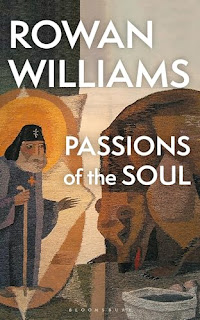Prosaic, sometimes dull, without undue drama: similarities between the monasticism of the Christian East and Old High piety?
Consider, for example, Williams' account of how the early Eastern monastic classics responded to the reality of temptation in the Christian life:
In the long run, the pattern of integrated, restored human life that we're called to and drawn to in the labour of prayer and service and love is in all sorts of ways - quite appropriately - a prosaic matter, a matter of doing the next thing (p.16).
This would function very well as an Old High description of what the Christian life is like: not a matter of drama, seeking emotional highs, or combating demons with intense asceticism but, rather, the prosaic matter of "doing the next thing" - going to Matins, gratefully cutting the grass, patiently helping the children with homework.
If this sounds boring, good (to only slightly overstate matters). To quote Williams on not indulging the noon-day demon who, amidst boredom, tempts us "to fill the void with fantasies about who you might be":
the truth is that ordinary grown-up human life is sometimes dull. Accept it, embrace it, live through it and the familiar advice: don't panic. If you try and conquer boredom by fantasy, by building up satisfying pictures of yourself, by nostalgia, resentment, wistfulness for the person you might have been, all the things that might feel helpful in combating boredom, you will ultimately be choosing fiction over truth (p.29).
The rooted routines of our lives - common prayer, labour, domestic obligations, neighbours and colleagues - can help to recall us from "a deeply unreal and dishonest life, pretending to be what we're not, pretending that the world is what it is not" (p.30). The Old High emphasis on duties to God and neighbour, as expounded in the Catechism and often set forth in Anglican preaching of the 18th century, can be understood in this manner, as a call away from fiction and delusions, that we might live out the Christian faith in the reality of our existence as dependent, embodied beings.
'Heroic' is not a word usually associated with Old High piety. Heroic asceticism, missionary endeavours, and martyrdom are to be sought for in other traditions. Again, however, Williams points to the Eastern monastic tradition (and, indeed, the Beatitudes) to remind us that the Christian life is often found in much less ordinary circumstances than dramatic heroism:
In any number of less dramatic ways than martyrdom, we shall in our own context have come across those who are able to live with attack, malice, self-doubt or failure without collapsing, those who are somehow able to recognize that it is God to whom they are answerable ... without undue drama (p.72).
The emphasis of Old High piety on the quiet, modest, sober Christian life, can bring us to discern such indwelling of Christ and the Spirit in very ordinary circumstances, lacking the drama of heroism.
I confess that I did not begin reading Passions of the Soul thinking that it would, in any way, lead me to ponder points of contacts between the monastic classics of the Christian East and the Old High tradition. That it did, however, is perhaps suggestive of the continued significance of Old High piety as a means of living out the Christian faith, in the prosaic, sometimes inevitably dull circumstances of our lives, without undue drama.
To return to the initial extract from Williams' book, we see here a description which can be applied to Old High piety, pastoral practice, and moral vision, rather beautifully capturing its meaning and potential: "the pattern of integrated, restored human life that we're called to and drawn to in the labour of prayer and service and love". Seeing and interpreting the Old High tradition of 18th century Anglicanism in this manner might not only aid in rescuing it from the 'enormous condescension of posterity', but also invite us to reflect on this tradition's continued relevance and resonance.




Comments
Post a Comment